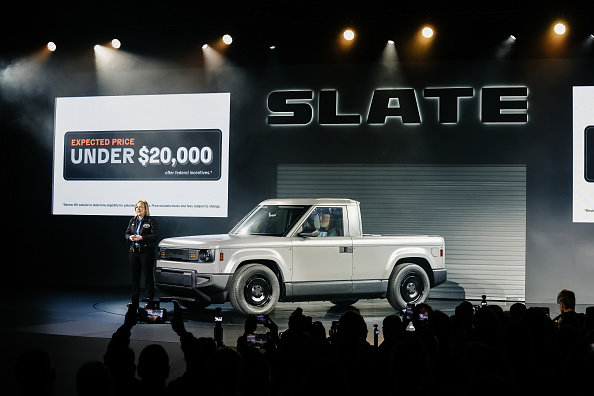Makers of the new $20,000 electric Slate Truck appear convinced that a radical shift in car entertainment will benefit consumers.
The author of this commentary is the publisher of Inside Music Media, where this piece originally appeared. Subscription info can be found here.
Is the Slate Truck the Future of Affordable Driving? The sleek new electric Slate Truck, touted at just $20,000, is redefining what drivers can expect from their vehicles. With no built-in radio, touchscreen, or even paint, this vehicle has a unique proposition: to overhaul in-car technology in a way that could potentially save consumers money. Backed by notable investors like Jeff Bezos, Slate Auto is betting on consumer dissatisfaction with traditional infotainment systems.
Legislation on the Horizon
- Currently, the AM Radio for Every Vehicle Act is in limbo. This legislation aims to mandate that all new cars include AM radio at no additional cost, but Congress has yet to pass it.
- A critical loophole: Manufacturers like Slate Auto, producing fewer than 40,000 vehicles annually, would enjoy a four-year grace period post-legislation to integrate AM radio—unless, of course, the act fails to pass.
- It’s ironic to note that while the AM bill could reshape car audio, it doesn’t even mention FM radio.
- With this legislative background, the question looms: Will this last-minute effort be too late to preserve radio’s traditional spot—the dashboard?

No Frills, No Radio
- The Slate Truck’s dashboard features a universal phone mount, allowing drivers to use their own devices for entertainment and navigation—this “bring your own technology” model could appeal to consumers tired of outdated infotainment centers.
- With USB power capabilities, drivers can keep their devices charged while using them for music, navigation, or other functions—a modern touch that retains simplicity.
- By eliminating built-in infotainment systems, Slate reduces manufacturing costs, translating savings into a more affordable vehicle for consumers.
- Significantly, research shows that many car buyers feel overwhelmed by the complexity of existing infotainment systems, indicating a market ripe for change.
Consumer Sentiment: A Shift in Preference?
- Many drivers express frustration over complicated infotainment systems; a preference for straightforward setups like Apple CarPlay and Android Auto is on the rise (see J.D. Power 2024 TXI Study).
- Even in premium vehicles, built-in systems often lead to dissatisfaction compared to simpler interfaces in mainstream brands (Consumer Reports).
- Nearly 90% of drivers prefer physical buttons over touch controls, prioritizing safety and ease of use (What Car? Study).
What Does This Mean for the Future of Car Audio?
- The ongoing trend of complex dashboards is creating frustration among drivers, calling attention to a need for simpler designs.
- While traditional dashboards with radio may vanish, consumer preference is shifting toward smartphone integration over outdated infotainment options.
- Several notable automakers, such as Tesla, BMW, and Ford, have already dropped AM radio from some EV models, citing interference issues with electric drivetrains.
- Brands like Mazda and Volvo are also scaling back AM radio availability, signaling a broader industry trend.
- Manufacturers are thinking ahead by eliminating traditional radio, aiming to streamline electronics and focus on user-friendly features.
- This shift doesn’t spell doom for radio; rather, it’s a paradigm shift pushing manufacturers to rethink car audio.
- Stripped-down models such as the Slate Truck highlight how the automotive landscape is evolving, even in the face of political efforts to protect AM radio.
The Bottom Line: The real threat isn’t merely the physical disappearance of radio; it’s its growing irrelevance. This is a battle that radio stations need to engage in now—by investing in local content and revitalizing their presence—rather than retreating into complacency.
Comment on this or any article. Email [email protected].
[Related: “The Satellite Radio Time Bomb“]






